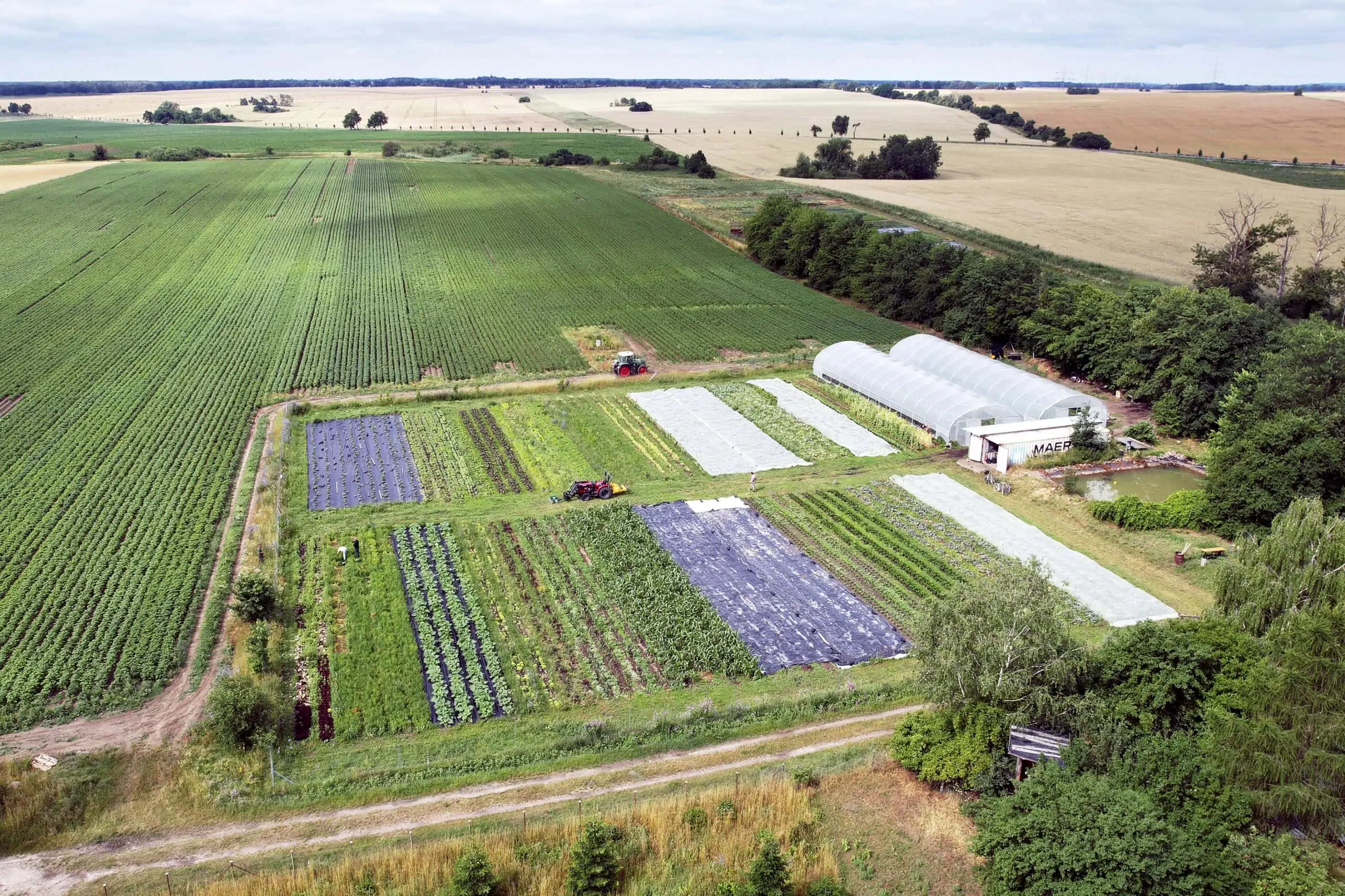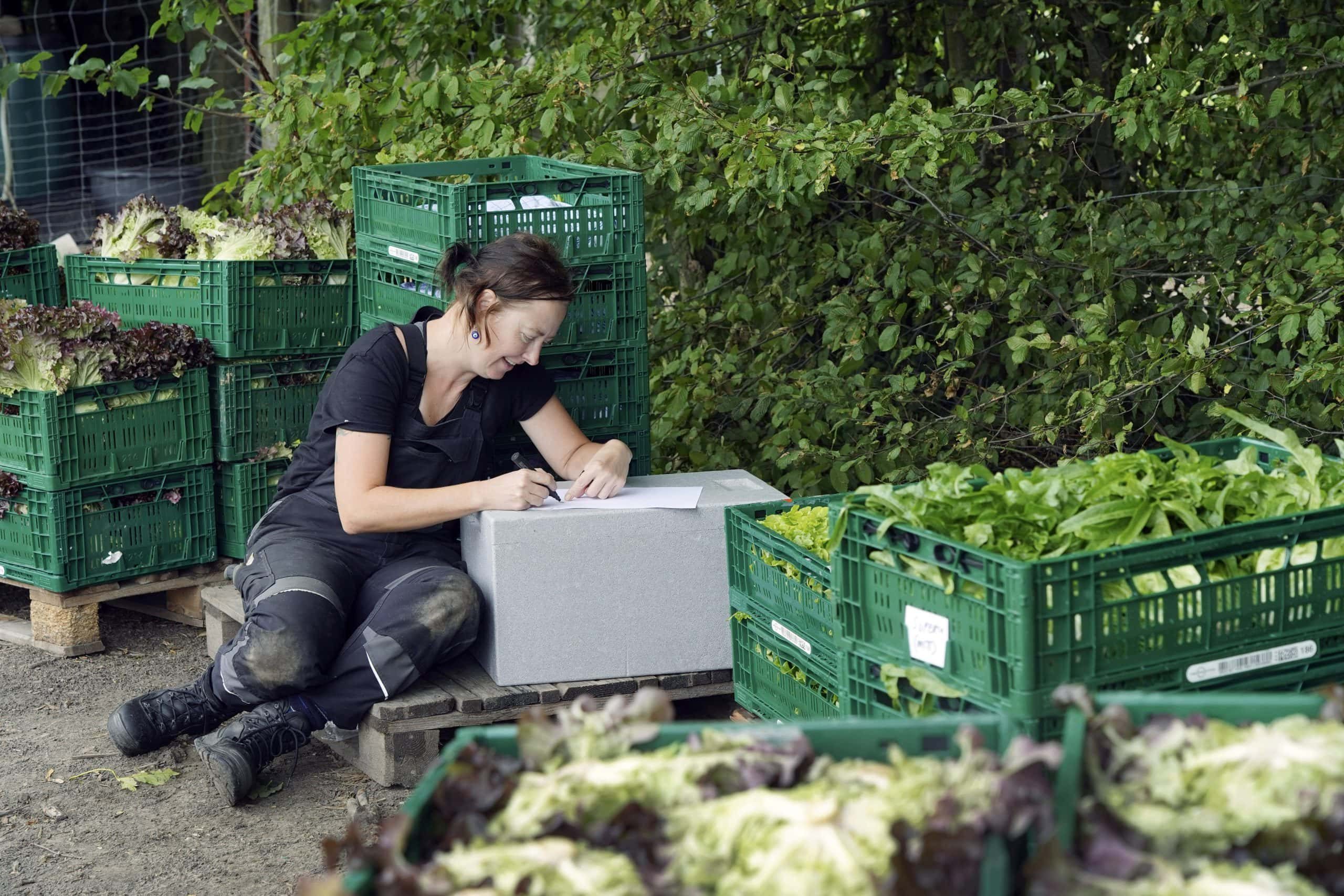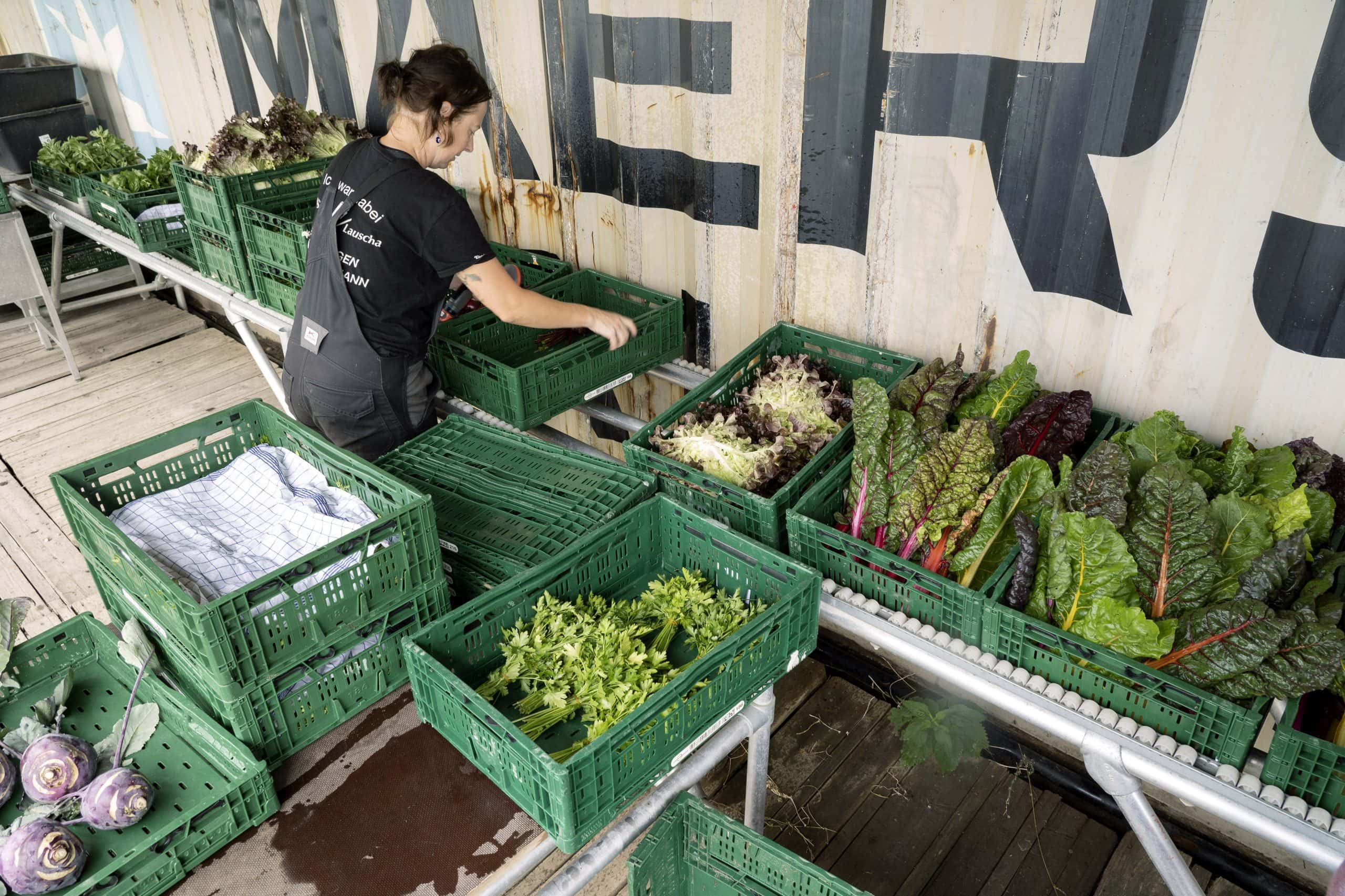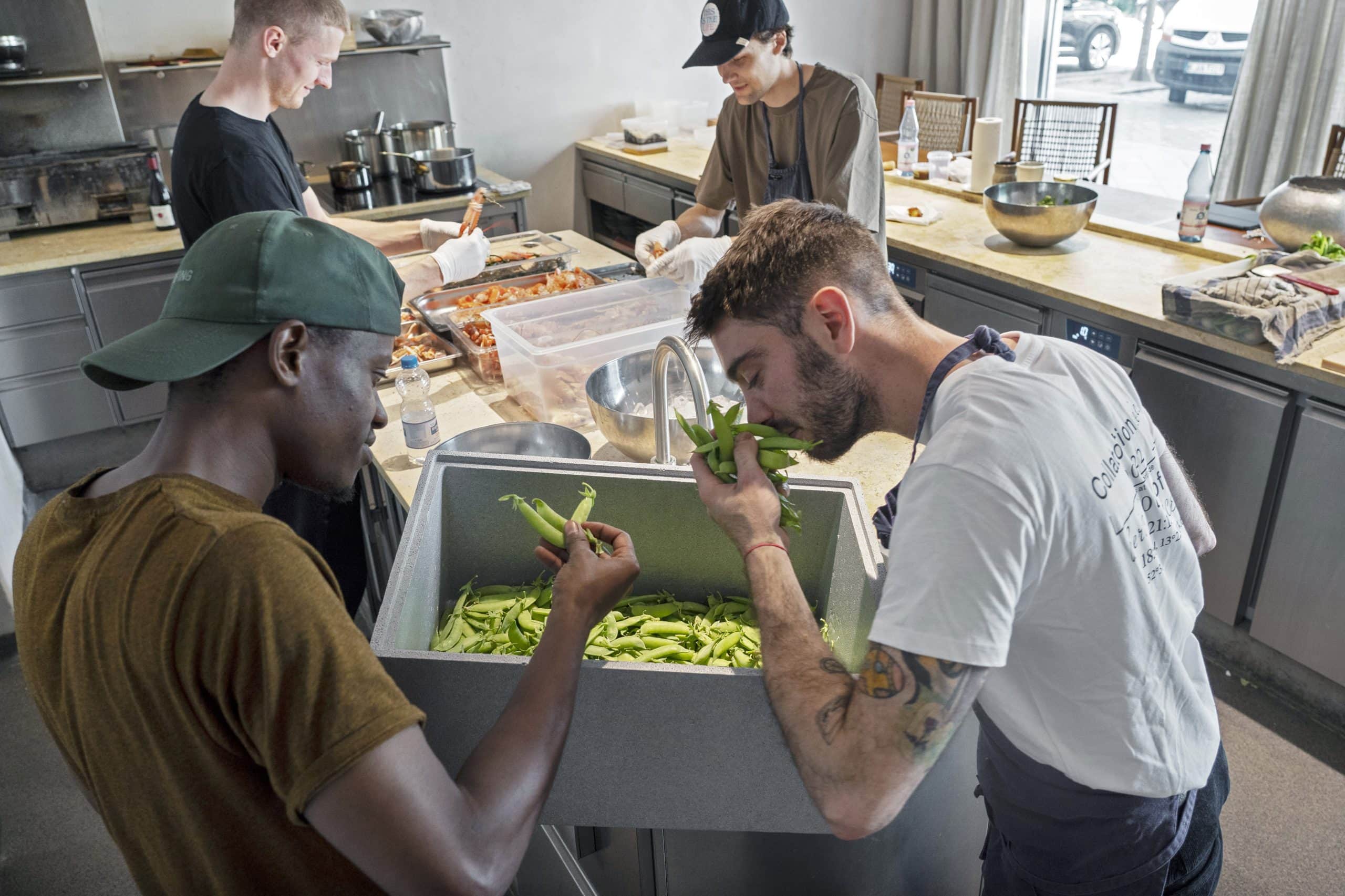They are quite something, the eclectically planted beds near Fürstenwalde on the Spree River, east of Berlin. Very close together, lettuce, beans, onions, chard, carrots, cilantro, parsley and much more are thriving. Poppies and other wildflowers bloom at the edges of the beds. And in two unheated greenhouses, dense rows of peppers and tomatoes slowly ripen.
It’s all unfolding on less than one hectare — a new kind of farm for a new kind of farmer: one who is likely younger, lives in the city and holds another job. These “tiny farmers” commute to the countryside, do the necessary field work, and then, from back at home, manage their farms via smartphone. It’s agriculture customized for the work-life balance generation.

The farmers are people like Dana Ruth, 27, who studied political science in California, and Bronwyn Carter, a visual artist and writer from Australia. Only 29-year-old Nathan Levenson is trained as a farmer. He studied sustainable agriculture at Evergreen State College and then worked for several years at Market Gardening Farms in Washington State.
All three live in Berlin. Three days a week they commute to Fürstenwalde by train and bicycle, to work the land owned by Tiny Farms, which pays them for their labor. They are part-time farmers, so to speak, alongside their other occupations in the capital. “I’m working in agriculture, which is something I’ve always wanted to do, and I can still be part of the international cultural scene in Berlin,” says the 47-year-old Carter, bending down to cut a fresh head of lettuce from the soil.
That’s exactly the goal of Tobias Leiber and Jacob Fels, the founders of Tiny Farms. “We need new hands and minds in agriculture,” says Fels, who has previously advised big food companies on sustainability. “It’s the only way to solve one of the industry’s biggest problems: fewer and fewer people want to work in vegetable farming.”

One reason for this is the grueling workload inherent to large-scale farming. Run a farm all day, every day, year round? Work through the summer and worry through the winter? It’s a life that doesn’t appeal to many young people. Ruth, for example, recently spent a week at a festival in Italy. “She must be the only vegetable gardener in Brandenburg who was able to take a week off in the summer,” says Fels.
Tiny Farms wants to spark the creation of a swarm of microfarms that can be run by their operators alone or collectively, full-time or part-time. The idea is that clusters of these farms can supply regional food to supermarkets, caterers, restaurants or school kitchens within a maximum radius of 100 kilometers. The startup trains the farmers of tomorrow in its academy, develops cultivation plans, supplies seeds and handles organic certification. Above all, the team at Tiny Farms in Berlin takes care of selling and transporting the products grown on the land of the farmers.
The concept fills a gap in the market: Organic markets in Germany often stock vegetables from far-flung parts of the country, southern Europe, or even Israel or North Africa. “In Berlin, only three to five percent of vegetables come from regional cultivation. In Nuremberg, on the other hand, the front-runner in terms of consumption of regional food, it’s one-fifth,” says Fels. “That’s the potential we’re targeting.” Fels’ smartphone rings and he sits down on a tree stump to join a conference call with software developers.
Tiny Farms is developing a digital portal with work instructions and tools for crop planning. Shortly before a farmer harvests a bed, they can find information there about exactly what customers are looking for, and take this into account while planning their next planting. This solves one of the biggest problems faced by many large farms, which operate on rigid, long-term crop planning cycles.

“They plant cucumbers without knowing who will buy them later,” says Carter. By contrast, the Australian artist knows exactly who she is harvesting her sugar snap peas for. Slowly, she walks along a row of the plants to pick ones that are still unripe, because unripe sugar snap peas are what have been ordered by a restaurant called Ernst ordered. The restaurant is one of Berlin’s hottest at the moment. “They prepare vegan caviar from the still unripe sugar snap peas,” says Carter. Ernst has leased two beds on Carter’s farm, where the team grows according to its instructions. That’s another component of the Tiny Farms idea: fixed partnerships for soil space to serve customers’ needs in precise coordination. This also helps the farms produce as little surplus as possible. Last year, Tiny Farms says it sold 97 percent of what was grown.
The biointensive farming used by Tiny Farms relies on compost, green manure, a sophisticated crop rotation, tilling the soil only superficially and close plant spacing. The beds are tread on as little as possible to keep the soil from becoming compacted or disturbed. Moisture and nutrients remain in the soil, which also sequesters CO2. Biointensive farms can use 50 to 75 percent less land and 94 to 99 percent less energy to produce a given amount of food than conventional farming.

What’s more, running a fully scaled farm requires capital, and in many European countries, including Germany, farmland is becoming prohibitively expensive. Young farmers can’t afford agricultural land. Indebted farms have to give up. Only the big ones survive. A Tiny Farmer, on the other hand, doesn’t need to go deep into debt. The pilot area in Fürstenberg, a former sheep meadow, costs Tiny Farms just 500 euros annually in rent.
Also, at 30,000 euros the investment in farm equipment is relatively low. This covers shovels, rakes, harrows and other hand tools, as well as the attachments of a small motorized plow and the spare parts of the irrigation system, which can be switched on remotely. The farm gets by on 2,000 kilowatts of electrical power annually. “There’s no need for a refrigerated container because we deliver just in time,” Fels explains. Tiny Farms has standardized a lot of things — the locations of the containers and the paths between the beds, the planting distances, the working equipment, the planning software — all of which keeps costs and labor down.
Crushed by negative news?
Sign up for the Reasons to be Cheerful newsletter.According to the startup’s calculations, a Tiny Farm of half a hectare can generate a revenue of 60,000 euros. If the farmer purchases the total package of modular bookable services from Tiny Farms, that leaves them with about 23,000 euros a year in profits. “That may not be enough for a full income, but it’s enough for a relevant income,” says Fels, looking at the van that has just pulled up. Its doors swing open, and the team quickly piles boxes of fresh lettuce and vegetables into its cargo area. Then it drives off in the direction of Berlin. Its first stop will be the central warehouse of LPG Biomarkt, a Berlin-based organic food chain with ten stores. After that, it’s off to two restaurants, a vegetable box provider, three school caterers and the community supermarket SuperCoop.
These are humble beginnings. But soon Tiny Farms plans to launch a project close to the city of Hamburg. Tiny Farms are also planned in Saxony-Anhalt and the Uckermark, where the startup is already negotiating with a supermarket chain as a buyer.
A thousand farms by 2030 is the company’s ambitious goal. According to the business plan, Tiny Farms should be in the black with as few as 25 farms. A grant from the Ministry of Agriculture has just expired. Recently, an investor took over one-fifth of the company.
One challenge to the concept, however, could be that corporate customers want to buy as many goods as possible from one supplier. Another challenge for a swarm of micro-farms is uniformity of quality standards and the reliable delivery of agreed-upon quantities.
But in times of climate crisis and exploding energy costs, regional organic foods are becoming increasingly competitive. Not only because of the short transport distances. Organic farming does not need mineral fertilizer. Since this is produced from natural gas, fertilizer prices are currently at a record high worldwide, which puts a great strain on conventional farms. So it comes at just the right time, the special concept for tomorrow’s farmers, who don’t necessarily have to give up yesterday’s activities for it.


